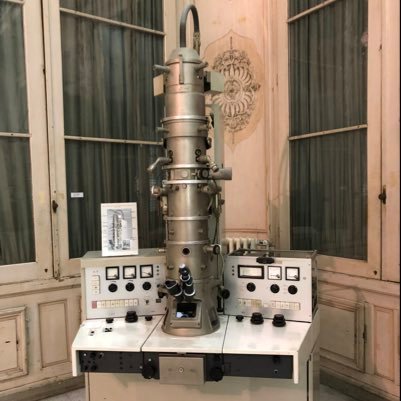
Stephen Scally
@StephenScally
Followers
147
Following
596
Media
0
Statuses
82
PostDoc at WEHI
Melbourne, Australia
Joined September 2017
Delighted to share our review on how those malaria parasites get into our blood cells and how we might stop them. https://t.co/hGGnAnjqlI
0
4
19
Our latest story describes the amazing evolutionary battle between malaria parasite and human. The parasite evolved RIFINs to bind inhibitory KIR receptors and suppress immune cell function while humans have activating KIR receptors to bind these RIFINs to kill parasites!
3
14
46
Pfs48/45 nanobodies block transmission 🦟 Pfs48/45 Nb-Fc reduce oocysts 💎 Structure of transmission-blocking Nb with Pfs48/45 👐🏽 Bispecific Nb-Fc targeting Pfs230 and Pfs48/45 🧑🏻🔬 PhD student Frankie Lyons 1st Author 🥳 Please repost & happy reading!
biorxiv.org
Malaria parasite fertilisation occurs within the Anopheles mosquito midgut. Interventions that inhibit parasite fertilisation prevent ongoing transmission and are important for malaria elimination...
0
6
33
Stabilized PvRBP2b variants - fun collab + Sarel Fleishman 🔥Increased yields & thermal stability ✌️Maintains human mAb recognition 🩸Sensitivity as sero-diagnostic for P. vivax 💕 Editors Pick 👨🏻🔬First paper PhD student Jaison Please read & repost! https://t.co/xZBdzNchUi
jbc.org
Plasmodium vivax is emerging as the most prevalent species causing malaria outside Africa. Most P. vivax infections are relapses due to the reactivation of the dormant liver stage parasites (hypnoz...
2
5
16
Interested in #malaria transmission? Check out our new work using cryo-EM of ENDOGENOUS sexual stage parasites to determine the Pfs230-Pfs48/45 fertilisation complex - please read & share! structures| nanobodies | human immune responses | mRNA-LNP https://t.co/GXJlBkDWfN
biorxiv.org
Plasmodium falciparum Pfs230 and Pfs48/45, part of a core fertilization complex, are leading malaria transmission-blocking vaccine candidates. However, how the two proteins interact is unknown. Here...
0
8
40
We’re looking for an RA and a Postdoc to work on a Gates funded project @WEHI_research, using structural biology to develop an effective malaria vaccine. Please share! https://t.co/mTxczK8gEv
https://t.co/J3rK22QV5f
1
20
21
So excited this work is now out in the world! Huge potential to shape vaccine design strategies for poorly immunogenic epitopes. Congratulations @Ali_Dvorscek and @isaak_quast and the rest of the team. Access without paywall here: https://t.co/LvzDTs7pgp
Online now: Conversion of vaccines from low to high immunogenicity by antibodies with epitope complementarity
1
4
23
Please RT! Postdoctoral position for 2 years @scienceANU - if you are interested in infectious diseases #StructuralBiology #Nanobodies please apply - new program on chytrid fungus 💎 🦙 🐸 Postdoctoral Fellow (Tham) - Canberra / ACT, Australia
0
41
48
Pleased that research led by @Sleebs_Lab @WEHI_research on optimization of a PfATP4 targeted antimalarial with curative and transmission blocking potential has been published.
pubs.acs.org
To contribute to the global effort to develop new antimalarial therapies, we previously disclosed initial findings on the optimization of the dihydroquinazolinone-3-carboxamide class that targets...
0
7
22
Many thanks to @the_Viin invited speaker @micromel_monash Dr Melanie Hutton for sharing her experience as an industry partnerships manager and academic researcher @monashBDI and the importance of having a supportive supervisor!
0
2
4
Stephen Scally @The_VIIN Young investigator committee member kicking off the VIIN annual Careers Evening #viincareers @WEHI_research. Many thanks to our sponsors for supporting this successful career development opportunity!!
0
2
8
Huge congratulations to Dr Danny Wilson on securing a prestigious @arc_gov_au Future Fellowship worth over $1 million! 🎉 Danny's groundbreaking research into malaria parasites is set to revolutionise global health. Read more:
0
3
32
We are also recruiting for an excellent student to join for the PhD program at University of Melbourne in my group- applications are open for 2025 - anticipated for end of October closing Would be great to have you join our growing group!
4
16
38
Also! I'm recruiting for a... Post doc: https://t.co/iBpRHBBXTb And an RA: https://t.co/eaVOhEVLWQ If you're interested in discovering weird and wonderful triggers of inflammation in #neurodevelopmentaldisorder, #neurodegeneration and #inflammatorydisease please apply
0
20
31
Tiing Jen and Jia Jia, alongside co-authors, published their study on T cell receptor recognition of citrullinated epitopes presented by HLA-DR4 today. @Monash_FMNHS @MonashBDI @NatureComms
https://t.co/jqjXk2psik
nature.com
Nature Communications - CD4+ T cells recognising shared susceptibility epitope (SE) encoded HLA-DRB1 presenting citrullinated self-peptides are implicated in rheumatoid arthritis. Here the authors...
0
5
14
Chung lab @TheDohertyInst @UniMelbMDHS is looking for an enthusiastic postdoc to research antibodies against infectious and autoimmune diseases. Please distribute!
0
20
24
Pleased that our article led by @PetarCalic
@Sleebs_Lab @WEHI_research working with @MedsforMalaria is published, describing the discovery and optimization of a new scaffold with potent antimalarial activity. https://t.co/piSfiopiKJ
0
3
16
Excited to share our new vaccine immunogen, designed through structure-guided methods, to prevent Plasmodium vivax. While the PvDBP antigen reduces parasite multiplication when used as a vaccine, it does not protect. PvDBP is also difficult to make. Could we make it better?
2
8
39
New treatments are needed as #malaria becomes resistant to current drugs. Research from @MadelineDans @Sleebs_Lab + team at WEHI & @BurnetInstitute finds PfSTART1 is a promising new protein target. Read the study in @NatureComms:
nature.com
Nature Communications - Compound MMV006833 inhibits ring-stage development of Plasmodium falciparum. Here, the authors show that it targets lipid transfer enzyme PfSTART1 and prevents PfSTART1 from...
0
4
11
I am happy to announce the publication of our latest work. Our research introduces a novel 19F T2-relaxation NMR-based competitive displacement assay for monitoring and quantifying interactions between natural and modified glycans to Siglec receptors. https://t.co/wibMj4XA18
0
1
2


















